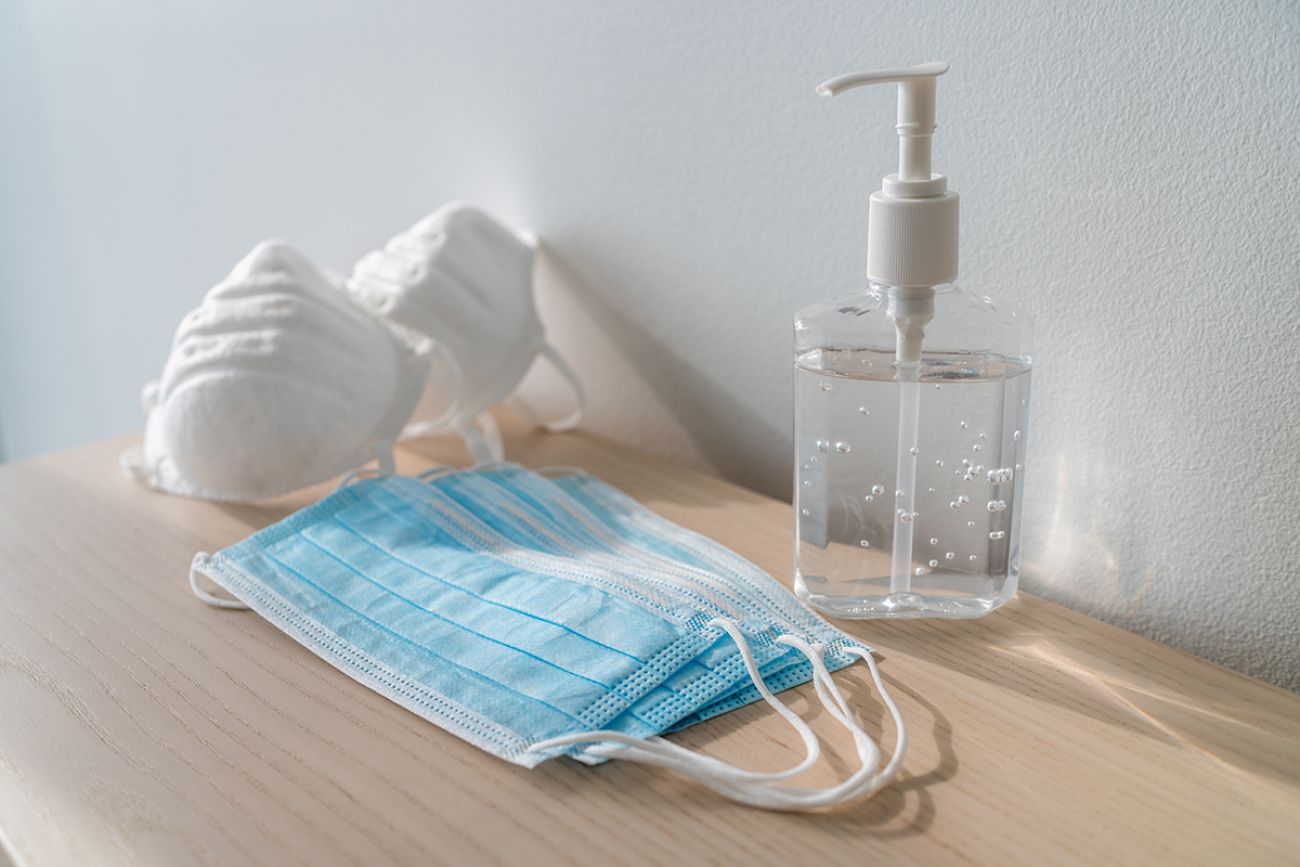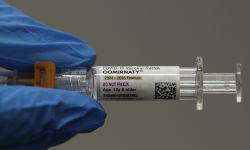Nearly four years into COVID, Michigan’s autumn looking far more promising

- COVID hospitalizations are half what they were a year ago and the number of reported cases has been falling for three weeks
- At the same time, the number of deaths has risen but remain a fraction of 2022 counts
- Experts credit herd immunity and a virus that appears to be weakening
As Michigan slips deeper into its fourth autumn alongside COVID-19, the virus has lost much of its flex as millions of people in the state have built immunity, keeping the latest variants at bay and reducing pressure on healthcare providers across the state.
COVID-19 case counts are falling steadily, hospitalizations are half what they were even a year ago, and deaths — though up in September from previous months — remain a small fraction of what they were a year earlier: 82 last month compared to 523 in September, 2022.
“We are in a good place,” said Dr. Natasha Bagdasarian, chief medical executive of the Michigan Department of Health and Human Services. “But it doesn’t mean COVID is going away, and it doesn’t mean we are in the clear this season or in the future.”
Related:
- Free COVID tests bound for Michigan mailboxes — if you ask
- New COVID-19 vaccine arriving in Michigan. Here’s what to know
- Michigan back-to-school COVID, flu vaccine requirements, and RSV too
The current arc suggests that Michigan may escape the worst of COVID this winter, doctors, epidemiologists and hospital officials steeped in the pandemic’s impact on the state told Bridge Michigan. Doctors say patients who have COVID-19 are coming in with less severe cases that can be treated at home and fewer are requiring a hospital stay.
“What we’re seeing is a lot less severe illness,” said Dr. Mark Hamed, an emergency room doctor and the health officer for several counties in and around Michigan’s thumb. Nearly 20 percent of his recent ER patients tested positive for COVID-19 but all were sent home to convalesce, he said.
Doctors are seeing fewer COVID patients at their offices, too. Case counts are down nearly 40 percent in the last four weeks as a rise in infections became a “blip,” the state’s Bagdasarian said, unlike surges seen in 2020, 2021 and 2022, that overwhelmed healthcare facilities across Michigan.
“Nobody is experiencing the same pressure that they had seen in the past,” she told Bridge.
Still, the disease continues to prove lethal for the most vulnerable, experts said, including the elderly who have heart, lung and immune system problems.
Data shows that in 2023, those 60 or older make up 91 percent of all deaths — up from 85 percent in this age group from 2020 through 2022. And those 80 and older make up 52 percent of 2023’s deaths, up from 41 percent in the first three years of the pandemic.
“The virus is not the explosive virus it was,” said Dr. James Baker, a professor of internal medicine at the University of Michigan Medical School, an expert in immunology, and author of a blog, Pandemic Pondering. “But it remains in the population, preying on people who are more susceptible to disease.”
While the elderly and sick continue to face COVID’s worst symptoms, “if you’re healthy, you're not going to be at risk with this virus,” said Dr. Victor DiRita, chair of the microbiology and molecular genetics department at the Michigan State University College of Human Medicine.
In the eastern Upper Peninsula, the local hospital — MyMichigan Medical Center Sault — has been admitting about a half-dozen patients each week for the past few weeks. On average, those COVID patients have been about 72 years old, said Mitch Zaborowski, the hospital’s infection control officer.
And, he added: “They have COVID, but they might have COPD (chronic obstructive pulmonary disease) or have cancer or other conditions, and COVID makes them worse off.”
Settling into patterns
The most recent increase that began in mid-July and ended in late September, follows the pandemic’s four-year pattern, said Dr. Aubree Gordon, a U-M epidemiologist. Cases rise in July and August, then fall before rising again in December and January, she said.
“We've also seen some other peaks due to variants, but those two have been consistent since the start of the pandemic. So, unfortunately, I expect we will see rates increase in the coming months and then decline again,” Gordon said in an email to Bridge.
In 2022, Michigan experienced these waves as two variants — first delta, then omicron — loomed and each triggered big increases in infections.
So far, no new variant has emerged for this fall and Gordon said that unless one does materialize, she does not expect to see peaks like those of prior years.
Several factors likely blunted this year’s COVID impact. In addition to a series of vaccines and boosters, the virus has been circulating now for nearly four years in Michigan, building the state’s immunity to it.
“Just about everyone at this time has had some run-in with COVID,” said Dr. Justin Skrzynski, internal medicine doctor at Corewell Health Beaumont Hospital in Royal Oak.

Moreover, the latest COVID strains appear to be weaker than some of the first variants, experts told Bridge.
“All the variants we see now are the descendants of omicron, which has tended to be less lethal,” Skrzyski said.
“It’s hard to tease out,” he added. “Is this a less lethal virus that is circulating, or have we, over time, built up a better response to it?”
Data — incomplete but revealing
Certainly, the data isn’t as precise a measurement for COVID spread as it was in the first years of the pandemic, and COVID almost certainly is circulating at numbers higher than are being recorded by the state.
That’s because home test results are far more likely to go unreported than in past years, when they they produce positive results. And work sites no longer routinely require testing; neither do hospitals test all patients.
Additionally, better treatments such as Paxlovid taken at home in the days after symptoms first appear, or high-flow oxygen given at the hospital, have prevented deaths.

“We have no idea what the COVID numbers are right now, but I can tell you that, anecdotally at least, a number of my colleagues have tested positive in the past few weeks for COVID and they’ve quarantined,” said Dr. Latonya Riddle-Jones, a professor of internal medicine at the Wayne State University of School of Medicine. But, she added, “symptoms are mild.”
Bagdsarian, the state chief medical executive, said residents must remain vigilant and take advantage of the vaccines that are still available and the therapeutics that can lessen the impact of infections.
Although roughly two-thirds of residents received the first two vaccine shots, just 18 percent got the bivalent booster that became available in 2022. Bagdasarian said she hopes more get the new vaccine that recently became available.
As immunity from vaccines or a prior infection wanes, she said, people remain vulnerable to a virus that still can pack a punch.
“We are in a good place but we’re only going to (remain) in a good place if we use the tools we have,” she said.
See what new members are saying about why they donated to Bridge Michigan:
- “In order for this information to be accurate and unbiased it must be underwritten by its readers, not by special interests.” - Larry S.
- “Not many other media sources report on the topics Bridge does.” - Susan B.
- “Your journalism is outstanding and rare these days.” - Mark S.
If you want to ensure the future of nonpartisan, nonprofit Michigan journalism, please become a member today. You, too, will be asked why you donated and maybe we'll feature your quote next time!








